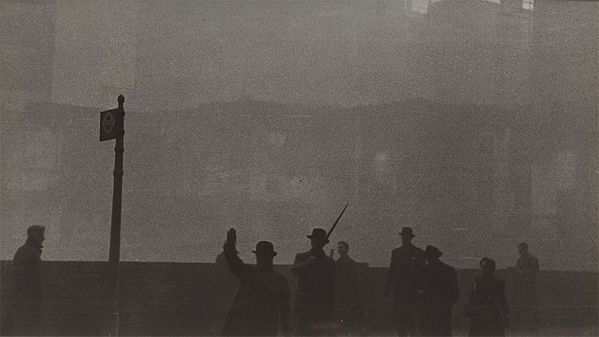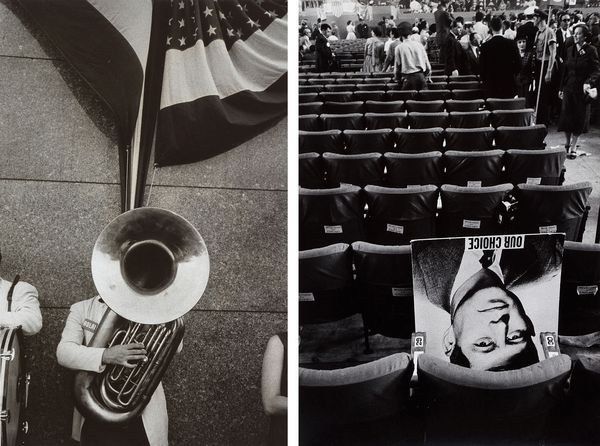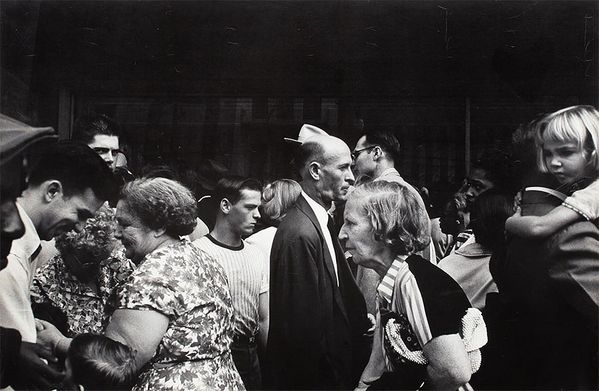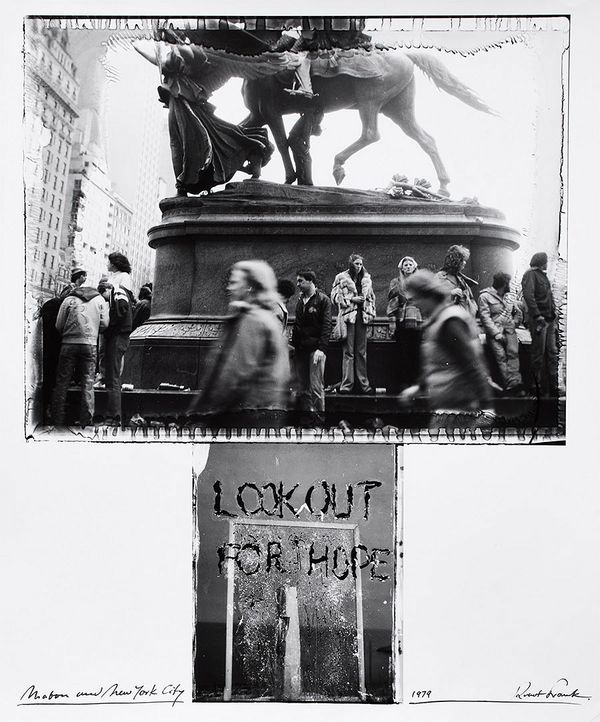Robert Frank, Parade – Hoboken, New Jersey, 1955. Photographs New York.
Teaching by example, Robert Frank set the template for the post-war photographer: make your own shooting script; immerse yourself in your surroundings; see honestly; and don’t pull your punches. Beginning in the 1940s, Frank set himself the task of photographing with his own mix of objectivity and tough love. When his photographs were called overly critical, his response was that “opinion often consists of a kind of criticism. But criticism can come out of love.” The Robert Frank photographs offered in Phillips’ April 6th Photographs auction give us an opportunity to check in with Frank’s work across the decades, to see what changed, and what stayed the same.

Robert Frank, London, circa 1952. Photographs New York.
Frank was in his late twenties when he began photographing in London, creating his first extended deep dive into a specific place. His primary focus was on the city and the bowler-hatted bankers who traveled its sidewalks and streets. These early pictures are filled with the look, feel, and atmosphere of their setting. Few images from the London series have the panoramic scope of the photograph offered here, in which its protagonists are seen against the modernist stage set of a London street, and in which the fog itself is a constitutive element, one that enhances rather than obscures the sweeping composition.
After the London work, Frank continued to hone his vision in America on a series of cross-country trips, funded by a succession of Guggenheim grants, and culminating in his landmark 1959 book, The Americans. What Frank saw on his travels was a country enjoying post-war prosperity but deeply riven by racial and class divisions. The book is united by themes and visual motifs which repeat throughout: the American flag, the pageantry of American politics, and street life among them. As the first plate in the book, Parade, Hoboken (top illustration) deftly sets the tone for the rest of The Americans.

Left: Robert Frank, Political Rally – Chicago, 1956. Photographs New York. Right: Robert Frank, Chicago, 1956. Photographs New York.
In 1956, Frank traveled to Chicago where he photographed the Democratic National Convention. To the Swiss-born Frank, the fervent and ostentatious display of political feeling was entirely new and fascinating. In Political Rally, Chicago, the American flag unfurls from the tuba’s bell like a patriotic march. The musician wears a badge in support of Adlai Stevenson, who won the party’s nomination for president. In the open vote for the vice-presidential slot, John F. Kennedy lost out to Estes Kefauver. In Chicago, an overturned campaign sign discarded amid the auditorium’s seats is an elegy for Kennedy’s defeat.

Robert Frank, Canal Street, New Orleans, 1955. Photographs New York.
In New Orleans, Frank photographed primarily on the street, capturing the ebb and flow of the city’s diverse residents. It was here that he photographed the segregated trolley car that became the cover illustration for The Americans. On that very same roll of film, Frank shot the above of pedestrians which, in its depiction of the archetypal urban street, is one of the definitive images in his body of work.

Robert Frank, Look Out For Hope, Mabou and New York City, 1979. Photos New York.
Beginning in the late 1950s, Frank moved away from photography to concentrate on making films. He purchased a house in Mabou, Nova Scotia, in 1970, and shortly thereafter began to work again with photography, this time with a filmmaker’s eye for combining images. Using Polaroid Type 665 film, which yielded both a positive photograph and a negative from which he could print, Frank’s new work frequently incorporated multiple images, and Look Out For Hope, Mabou and New York City is an exemplary photograph from this period. Frank makes brilliant compositional use of the negatives’ untidy edges and incorporates text written directly onto the negative of the lower image, creating a hybrid image/poem that draws a line between the bustling urban space and the bleak beauty of Nova Scotia.
Discover More from Photographs New York >
Recommended Reading
A Mapping of the Self: Photographs from the Collection of Peter McLeavey >
